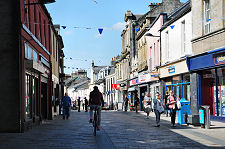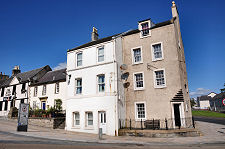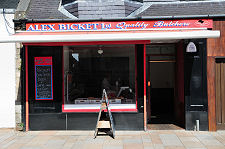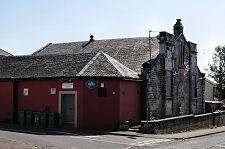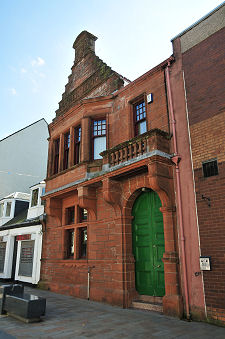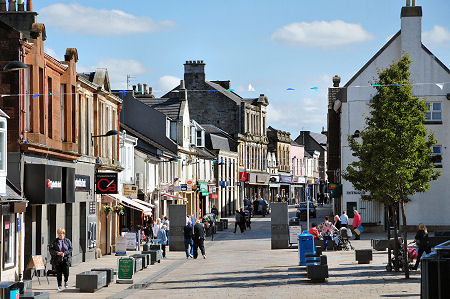 Kilwinning Main Street |
The town of Kilwinning stands beside an important crossing over the River Garnock some three miles north of the point at which it enters the sea in Irvine. Today's Kilwinning has been very effectively bypassed by a dual carriageway section of the A78, which since 1961 has passed some three quarters of a mile to the south of the town. This has relieved the town of its earlier reputation as a bottleneck, but at the same time it has given potential visitors every reason to stay away.
The origins of Kilwinning date back a very long way. The original name of the settlement here was Segdoune, which might have derived from "Sanctoun" or "Saint's Town". It seems that some time in the early 600s a church was founded to the west of the crossing over the River Garnock dedicated to St Winnan, also known as St Winin or St Finnian. There is a lot of debate about who St Winnan was. Some sources have him living in this part of what is now North Ayrshire and one has him dying and being buried here in 579.
The least unlikely option associates St Winnan with St Finnian of Movilla, an Irish monk and a teacher of St Columba. If this is the case then he probably never visited the place that at some later time came to be named after him, instead simply having a church here dedicated to him. The name "Kilwinning" comes from the Gaelic for "Church of Winnian".
Fast forward several centuries and the site of this early church was chosen by Richard de Moreville, Lord of Cunninghame, Lord of Lauderdale and Constable of Scotland as the site for a new abbey. Kilwinning Abbey was founded some time between 1162 and 1187 by Tironensian monks from Kelso Abbey, and was once one of the grandest abbeys in Scotland. Today its substantial ruins stand immediately to the south of Kilwinning's Main Street, though it has to be admitted that if you didn't know they were there it would be perfectly possible to walk straight past what looks like the entrance to a churchyard without ever realising what lies behind the shops and other buildings.
For the next four centuries the fortunes of Kilwinning followed closely the fortunes of Kilwinning Abbey. This meant that, apart from an occasional raid during the Wars of Independence, the town grew and flourished. But it also mean that the fortunes of the town took a distinct downturn when the abbey, together with others across Scotland, went into decline in the early decades of the 1500s, and was then swept away in the aftermath of the Reformation of 1560.
By 1800 Kilwinning was becoming an increasingly important industrial centre. Coal was being mined in the vicinity and textiles and milling were also important in the growing town. The railway first arrived as early as 1831, but proper connections were not made with Glasgow and Ayr until 1840. Before long an ironworks had been established, as well as a food cannery.
A little over a mile to the south-east of Kilwinning are the ruins of Eglinton Castle, now standing in a country park. In August 1839 this was the venue for the amazing Eglinton Tournament, an attempt by the 13th Earl of Eglinton to remedy what he saw as the Government's failure to celebrate Queen Victoria's coronation, which had taken place the year before, sufficiently grandly. He therefore spent today's equivalent of £4 million on a three day recreation of a medieval tournament which attracted some 100,000 spectators and involved arranging some of the world's first excursion trains, from Ayr. It apparently rained on all three days and the vast cost of the enterprise was among a number of reasons why Eglinton castle was abandoned and de-roofed in 1925.
By the 1960s Kilwinning was viewed as an ex-industrial town and most people stayed on the A78 and passed it by. In 1966 Kilwinning was designated a part of the newly established Irvine New Town, and over the following 15 years this led to a doubling of its population as new housing development took place. New industries have to some extent replaced the older ones that were lost, including plastic fabrication. And in 2000, Ayrshire College opened a major new campus in the town.
Today's visitor will probably focus their attention on the ruins of Kilwinning Abbey, and on the fairly attractive Main Street (as pedestrianised shopping streets go) which passes on an east-west axis just to the north of the abbey. There are a couple of particular points of interest to look out for. At the east end of Main Street, almost in front of the Buffs Tavern (where it was moved to in 1835 to make way for traffic) is a mercat cross which is topped off with a highly unusual wooden cross.
Meanwhile, back along Main Street is an imposing red stone building declaring itself to be the "Mother Lodge". This was built in 1893 to house the oldest freemason's lodge, numbered "Lodge 0" to be found in Scotland. It seems likely that freemasonry found its way to Kilwinning at a very early date, at a time when bands of self employed masons travelled the country repairing buildings like Kilwinning Abbey.
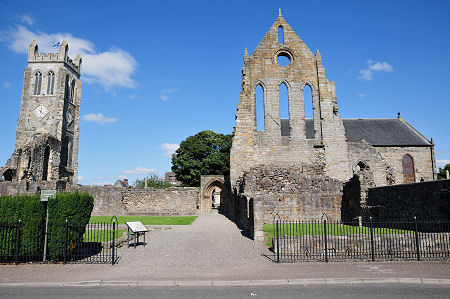 Kilwinning Abbey |
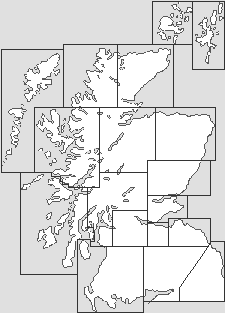
|
|
|
Visitor InformationView Location on MapWhat3Words Location: ///zebra.thread.hood |
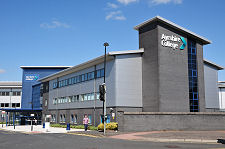 Ayrshire College |
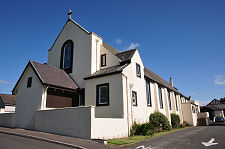 St Winning's Church |
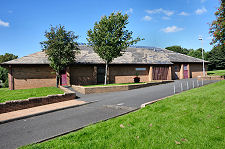 Kilwinning Library |
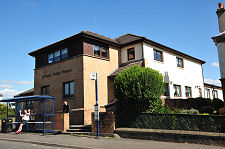 Kilwinning Medical Practice |
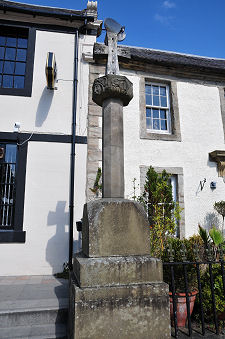 Wooden Mercat Cross |
